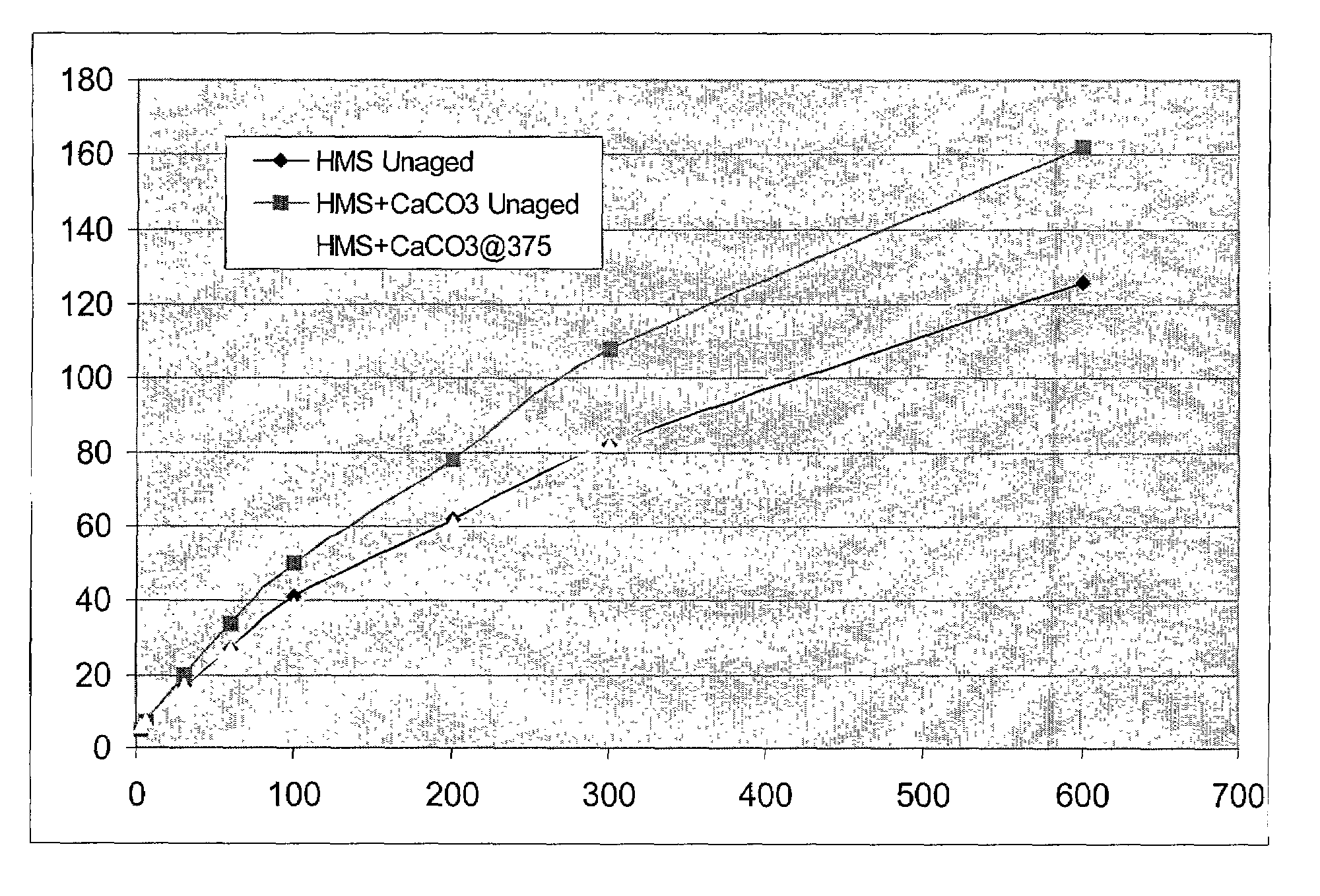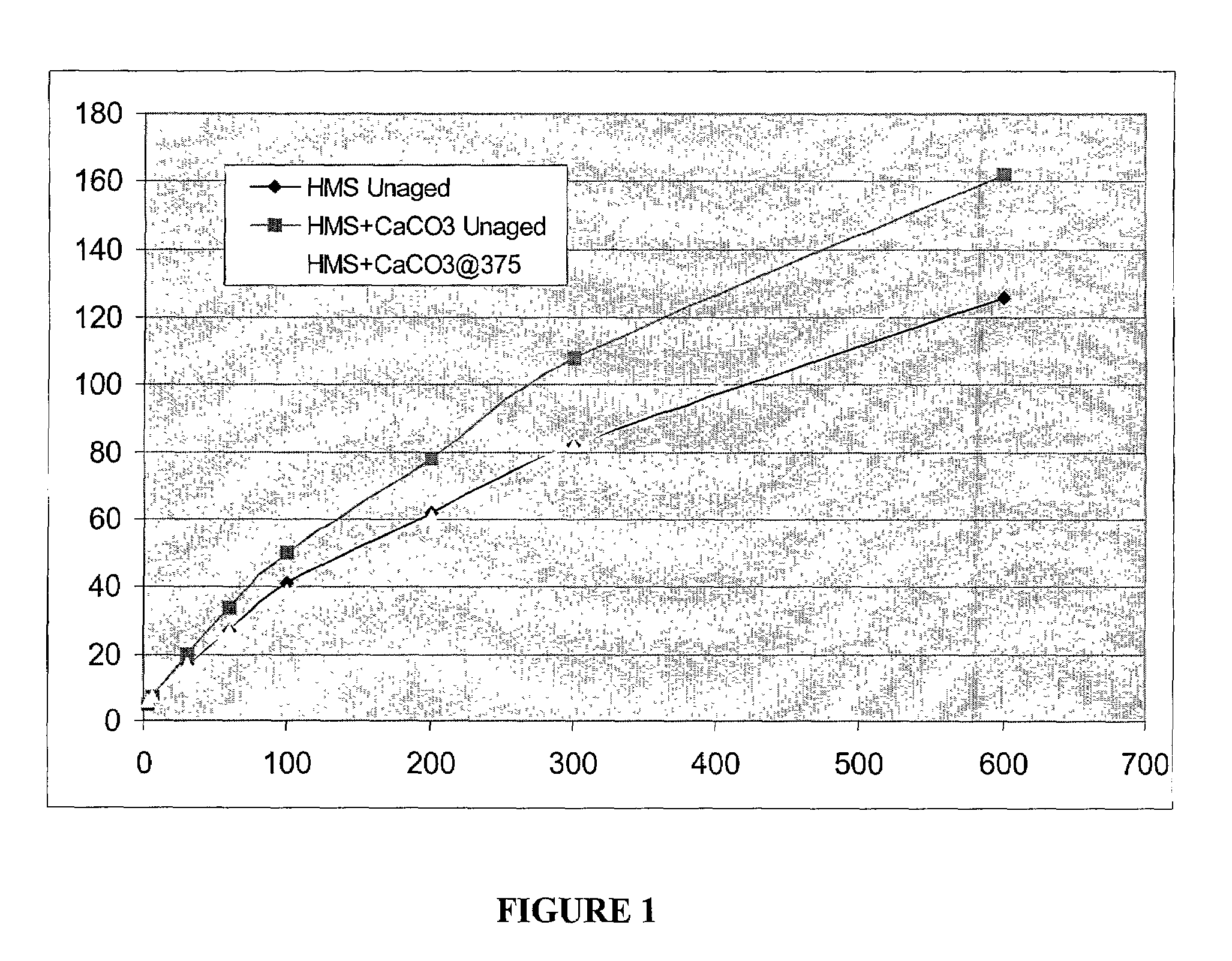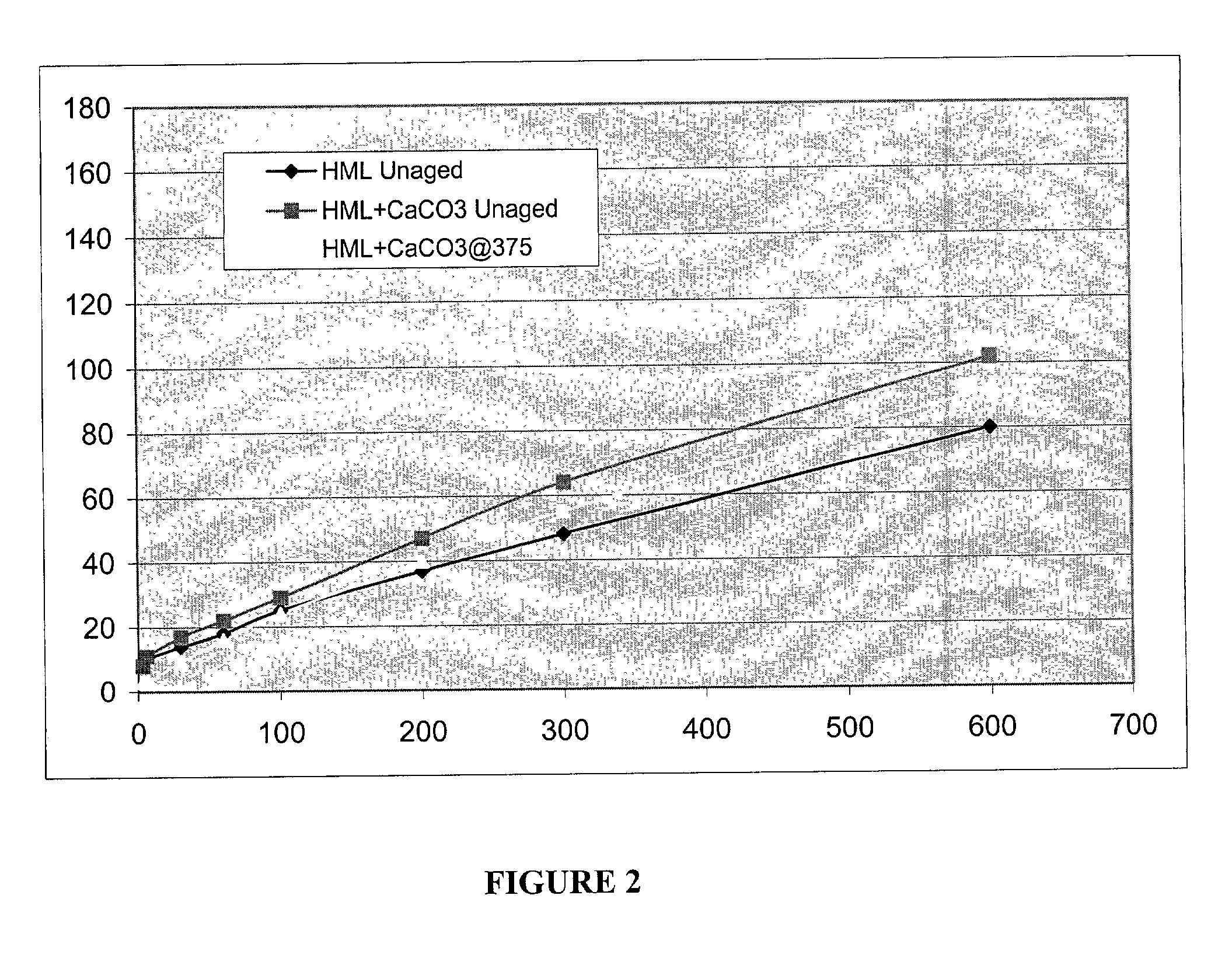Hydrophobe associative polymers and compositions and methods employing them
a technology of associative polymers and hydrophobes, applied in the directions of transportation and packaging, sealing/packing, wellbore/well accessories, etc., can solve the problems of fluid loss increase, formation damage, and degree of viscosity reduction, and achieve high viscosity and density, good thermal stability, and high viscosity. high
- Summary
- Abstract
- Description
- Claims
- Application Information
AI Technical Summary
Benefits of technology
Problems solved by technology
Method used
Image
Examples
example i
[0052]In this Example I a hydrophobe associative polymer in accordance with the above disclosure is synthesized. All amounts are in grams.
[0053]
1. Acrylic acid68.45g2. Lauryl methacrylate0.643. 0.1% Methylenebisacrylamide3.374. Deionized water99.585. Acrylamidopropanesulfonate49.226. 29% Ammonia69.617. 1% Sodium bromate0.508. 1% Sodium persulfate5.009. 1% Sodium metabisulfite1.50
Ingredients 1, 2, 3 and 4 were weighted into a 600 ml beaker. The beaker was placed in a water bath set at 5 degrees C with stirring. Ingredient 5 was then added and dissolved. When ingredient 5 was completely dissolved, ingredient 6 was added, keeping the temperature less than 30 degrees C. After ingredient 6 was completely added, the bath temperature was set to 30 degrees C. The beaker is sparged with nitrogen and after 60 minutes initiator ingredients 7 and 8 were added. The vessel was stirred for 5 minutes after which ingredient 9 was added and then stirred for one minute. Stirring and nitrogen sparge we...
example ii
[0054]To an 83% cesium formate (2.2 s.g.) solution, hydrophobe associative polymer prepared in the manner of Example I was added in the amount of 6 lb / bbl and tested by typical API test procedures as in “Recommended Practice Standard Procedure for Field Testing Water-Based Drilling Fluids” API Recommended Practice 13B-1 (RP 13B-1) First Edition, Jun. 1, 1990 (American National Standard, ANSI / API RP 13B-1-90 Approved: Jul. 12, 1993). The procedure commenced with weighing the dry polymer and cesium formate solution. In this example eight different solutions were formed and tested. The eight different solutions all were made with the same cesium formate base solution. The eight solutions differ in the hydrophobe associative polymer that was added to the cesium formate base solution. Each of the solutions is listed below in Table 1.
[0055]
TABLE 1Sample #12345678HME, lb / bbl6———6 ———HML, lb / bbl—6———6 ——HMS, lb / bbl——6———6 —N Vis HB, lb / bbl———2.52.52.52.5—4mate-vis-HT, lb / bbl———————6
N Vis...
example iii
[0058]In this example four samples were prepared, including three hydrophobe associative polymer samples and one 4mate-vis-HT sample. The three hydrophobe associative polymers were samples 1–3 of Example II, i.e., a sample solution made with HME, a sample solution made with HML, and a sample solution made with HMS. The viscosity of each polymer sample was measured at 0.1 wt. % in deionized water using an OFI model 800 viscometer. Promising samples of each solution were then tested in cesium formate (2.2 s.g.) solution. The hydrophobe associative polymer compositions, and the 4mate-vis-HT, each were added to its corresponding cesium formate solution at 6 pounds per barrel. The viscosity of each sample was then measured using a FANN 35 viscometer at several rpm settings. The results from the viscometer testing are listed in Table 3 below.
[0059]
TABLE 3Setting (rpm)600300200100603063Control132775835241454HMS Unaged126826241271775HME Unaged 92644530201365HML Unaged 80483725181410 8
[0060]...
PUM
| Property | Measurement | Unit |
|---|---|---|
| wt. % | aaaaa | aaaaa |
| wt. % | aaaaa | aaaaa |
| temperatures | aaaaa | aaaaa |
Abstract
Description
Claims
Application Information
 Login to View More
Login to View More - R&D
- Intellectual Property
- Life Sciences
- Materials
- Tech Scout
- Unparalleled Data Quality
- Higher Quality Content
- 60% Fewer Hallucinations
Browse by: Latest US Patents, China's latest patents, Technical Efficacy Thesaurus, Application Domain, Technology Topic, Popular Technical Reports.
© 2025 PatSnap. All rights reserved.Legal|Privacy policy|Modern Slavery Act Transparency Statement|Sitemap|About US| Contact US: help@patsnap.com



